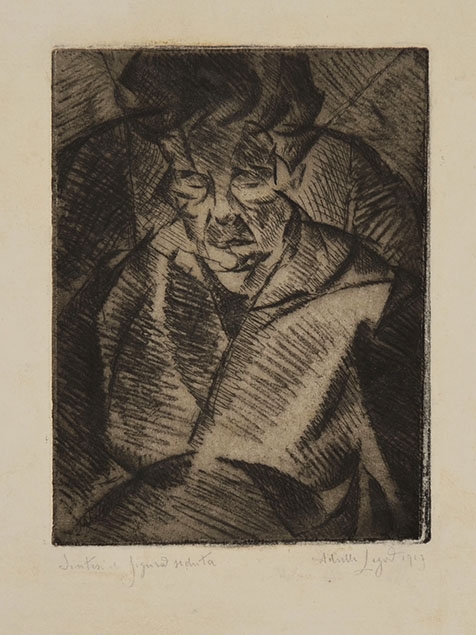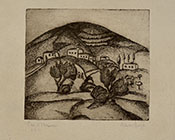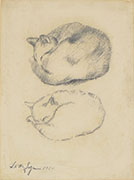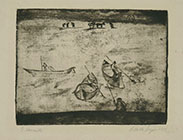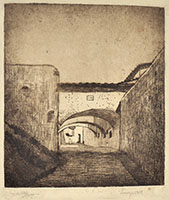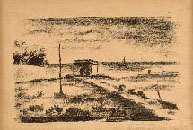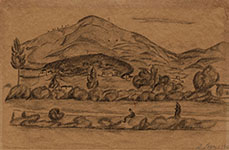(Brisighella 1899 - Florence 1934)
SINTESI DI FIGURA SEDUTA, 1917
Etching and soft ground etching. Fine impression printed in black ink on thick white wove, with margins and in very good condition. To the platemark 184 x 137 mm; the full sheet measuring 314 x 247 mm. Titled signed and dated in pencil at bottom Sintesi di figura seduta / Achille Lega 1917.
According to Sigfrido Bartolini the edition was only of a few impressions, not all signed. See Sigfrido Bartolini, Achille Lega, L'Opera Incisa e Iconografia, Reggio Emilia, 1980; Tav. XXXV, p. 119
Born in Romagna, Achille Lega lived in Florence from the age of ten. He first studied painting with Ludovico Tommasi, who belonged to the Postmacchiaioli movement. In 1914, he enrolled into the Accademia di Belle Arti and also in the Scuola Libera d'incisione all'acquaforte, directed by Celestino Celestini, but abandoned the studies after two years. The first known work by Lega is an etching done in 1914. His early paintings show some essential elements that will remain throughout his career: the interest in the popular world, the extreme simplification of form and the great expressive power. In those years Lega took part in the debates of young artists and intellectuals who animated the Florentine Caffè Giubbe Rosse. During these meetings he was able to forge strong bonds of friendship like the one with Rosai and met personalities such as Soffici, Marinetti, Boccioni and Carrà. Between 1916 and 1919 Lega approached to Futurism, considered as a vitalistic boost in opposition to academicism in official circles. A constant point of reference in these three years of experimentation was Soffici, who gave the first impetus to the Florentine Futurism, born in response to the Milanese movement led by Marinetti. The most significant painting of Lega's futuristic period is probably Vibrazioni atmosferiche di un aeroplano in volo (1917), considered the first example of aereopittura. In 1919 he participated in the Esposizione Nazionale Futurista organized by Marinetti in Milan and in 1922 he held is first solo exhibition in Florence. Between 1926 and 1933 Lega collaborated with the Florentine biweekly Il Selvaggio, directed by Mino Maccari, which was an important tool for the spreading of the most advanced artistic ideas of the time. In 1926 and 1929 he exhibited his works at the Palazzo della Permanente in Milan with the Novecento group and he participated in the Venice Biennale from 1924 to 1934.
